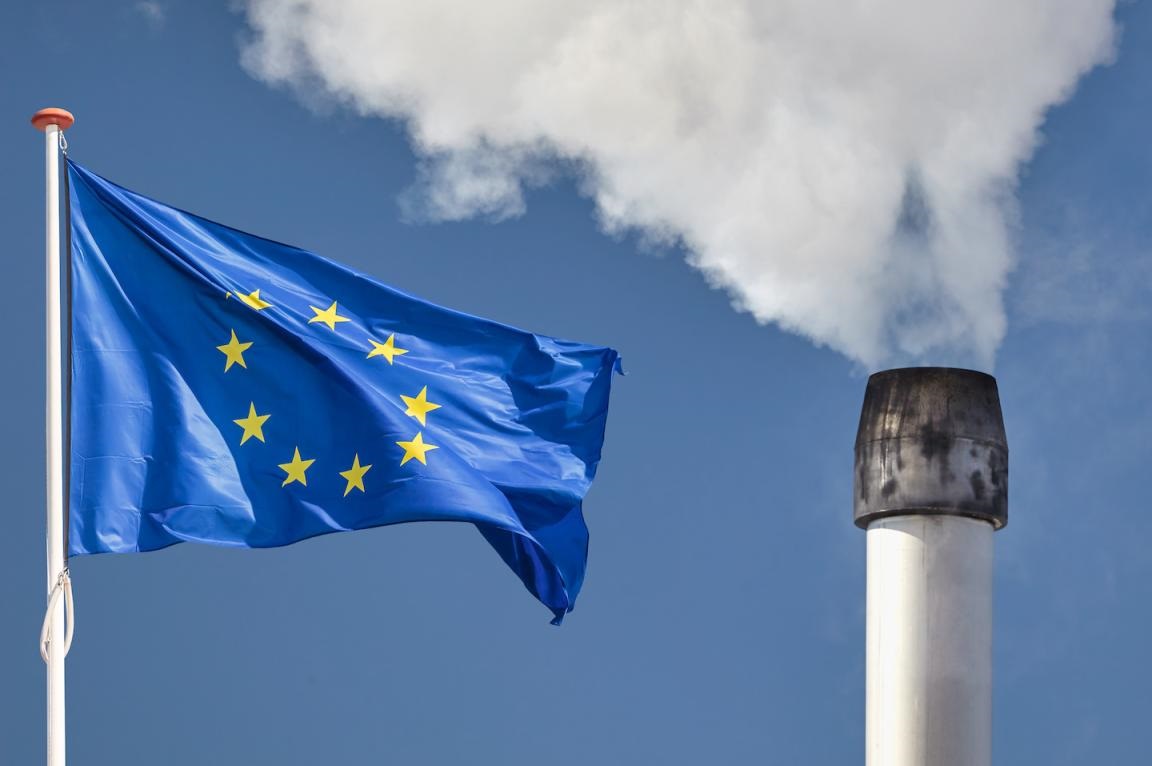11 Dec 2024

Tired Earth
By The Editorial Board

On 6 February, the European Commission will present its vision for industrial-scale carbon management, including its capture, storage, and use, all of which are indispensable when meeting climate targets.
“Reaching economy-wide climate neutrality by 2050 will require carbon removals to counter-balance residual emissions from hard-to-abate sectors,” states the draft proposal seen by Euractiv.
Meeting the bloc’s climate targets means the EU “will need to be ready to capture at least 50 million tonnes of CO2 per year by 2030,” the draft says. The 2050 goal is 450 million tonnes of annual storage (MTA) with an intermediate target for 2040 of 200 mta.
“Based on most climate scenarios, Europe needs around 400 to 500 million tonnes of annual CO2 storage capacity” by 2050, says Eadbhard Pernot, who manages carbon capture policy at the NGO Clean Air Task Force.
Direct air capture target
But what the Commission is poised to propose goes beyond that. “In addition, between 100 and 200 million tonnes of CO2 will need to be captured directly from the atmosphere,” reads the draft Commission paper.
This is very much welcomed by the experts. “The Commission’s plan to propose a target of 100 to 200 million tonnes to remove carbon dioxide from the air is especially exciting,” says Valter Selén, associate policy director at the NGO Carbon Gap.
An open question is what to do with the captured CO2. When carbon is sucked out of the air, it can be either stored underground – the “main destination for captured CO2”, as the proposal says – or used to produce goods like plastics, medicines or synthetic fuel.
“The devil is in the details,” Selén cautions, saying “it would make more sense to set a separate dedicated target for the storage of carbon removed from the air” as long as there is no clear view of how much air-captured CO2 will be durably stored underground and how much will be reintroduced in the economy via chemical products.
The new North-South divide
Carbon capture and storage also risks creating a geographic divide within Europe. The Porthos project in the port of Rotterdam is the only major CCS project where a final investment decision has been made – for 2.5 mta storage, inviting the region’s industrial clusters as customers.
Currently, “there is something of a North-South divide when it comes to storage projects,” says CATF’s Pernot. “Most European storage projects are planned in the North Sea, while projects in Southern Europe are much smaller and plans are less advanced,” he explains.
The North Sea, where European countries once produced large quantities of oil and gas, is often considered the optimal destination for the industrial emissions of CO2 emitted from mega ports such as Rotterdam, Antwerp and Hamburg.
But especially in the case of cement, regionally distributed carbon storage projects will be needed. Cement is usually located near-site due to its low-value density, meaning that receptacles for the carbon created during production must be distributed across Europe.
Looking to the future
Carbon removal projects take years to materialise, making it even more essential to kickstart the regulatory and technological processes early.
“It’s not a question of waiting for 2030 to get to all the other decarbonisation options – Europe has to start planning now to scale these technologies by 2050,” says Pernot.
Meanwhile, the European Commission says it will “develop policy options and support mechanisms for industrial carbon removals, including if and how to account for them in the EU ETS,” the bloc’s carbon trading scheme.
The ETS currently puts a cap on the amount of CO2 industry and electricity producers are allowed to emit. The amount of emissions permits will decrease towards 2030 as the EU gets closer to its objective of reducing emissions 55% below 1990 levels, pushing up the price of CO2 allowances and driving the decarbonisation of the economy.
For some researchers, this regulated CO2 market will one day need to be merged with the nascent market for carbon removals.
“We now need to lay the foundations for the gradual integration of CO2 storage into the ETS,” explains Michael Pahle, a carbon pricing expert at the German Potsdam Insitute for Climate Research (PIK). “We will probably not complete this process until the mid to late 2030s,” he adds.
But allowing private companies to store carbon and mint CO2 emission certificates is controversial. The risk, critics say, is that the ETS hard cap will be softened, causing the EU carbon market to collapse.
Indeed, mixing removals with emission certificates – which are currently numbered – would create “the wrong incentive, and these should be non-fungible,” Selén says.
Scientists call it “mitigation deterrence.” Instead of investing into decarbonisation immediately, companies could be tempted to procrastinate and bet on further carbon removal solutions instead of reducing their emissions.
To prevent this, Selén says carbon removals should only be used to address so-called residual emissions from agriculture and industry – those that cannot be avoided – and to reach net-negative emissions after 2050.
“This risk of ‘mitigation deterrence’ does indeed exist if expectations about the role of carbon dioxide removals are not managed. This is why an early and binding roadmap for gradual integration is so important,” says Pahle.
Still, Pahle believes the two routes will need to merge at some point. “One day, the economy must be able to offset removed tonnes of CO2 via the ETS, as this is an efficient system for balancing avoidance and removal.”
Source : euractiv.com
Comment